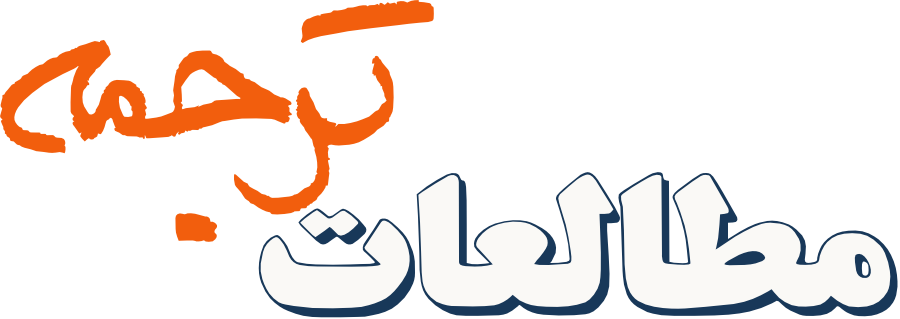نقش مترجمان دورکار ایرانی: معیارها، انگیزهها و رضایت شغلی
چکیده
ترجمه به عنوان شکلی از ارتباط بینازبانی و بینافرهنگی، همکاری کارگزاران مختلف را در بر میگیرد. در سالهای اخیر، بازار ترجمه و همکاری مترجمان با مراکز ترجمه در پژوهشهای مختلف مورد توجه قرار گرفته است. این مطالعه نیز به بررسی معیارهای حرفهای مترجمان دورکار ایرانی در همکاری با مراکز ترجمه آنلاین میپردازد. نوع پژوهش از نظر هدف، کاربردی و از نظر روش تحقیق، توصیفی پیمایشی است. جامعه آماری شامل همه 170 مترجم دورکاری بود که با مؤسسه سفیر ترجمه ملل اصفهان همکاری میکردند که از میان آنها 118 نفر به عنوان حجم نمونه انتخاب شدند. تحلیل دادهها با نرمافزار SPSS و روشهای آماری توصیفی و استنباطی انجام شد. نتایج پژوهش در مورد تمایل به همکاری تنها در یک حوزه تخصصی نشان داد که اکثر مترجمان تمایل داشتند در بیش از یک حوزه تخصصی با مرکز ترجمه همکاری کنند. همچنین، از نظر مهمترین عامل در تعیین تعرفه ترجمه، اکثر مترجمان بر بالا بودن تعرفه ترجمه تخصصی نسبت به ترجمه عمومی تأکید کردند. نتایج تحقیق حاضر در مورد بهترین شیوهی دریافت و تحویل سفارشها ترجمه نشان داد که اکثر مترجمان تمایل به استفاده از پنل کاربری در وبسایت مرکز ترجمه موردنظر داشتند. و سرانجام نتایج مربوط به مهمترین عامل در پرداخت دستمزد نشان داد که اکثر مترجمان بر این باور بودند که پرداخت پاداش به مترجمان فعال، مهمترین عامل در این زمینه است.
کلمات راهنما:
مطالعات ترجمه, مترجمان دورکار ایرانی, مراکز ترجمهمراجع
بازرگان، عباس (1383). ارزیابی آموزشی. تهران: سمت.
یونکر، جان (1389). راهنمای مشتریان باهوش در انتخاب یک مرکز ترجمه. ترجمۀ مریم پورگلوی. تهران: انتشارات جنگل.
Abdallah, K. (2012). Translators in production networks: Reflections on agency, quality and ethics [Doctoral dissertation: University of Eastern Finland].
Dam, H. V., & Zethsen, K. K. (2008). Translator status: A study of Danish company translators. The Translator, 14(1), 71–96. https://doi.org/10.1080/13556509.2008.10799250
Dam, H. V., & Zethsen, K. K. (2011). The status of professional business translators on the Danish market: A comparative study of company, agency and freelance translators. Meta, 56(4), 976–997. DOI: 10.7202/1011263ar
Dam, H. V., & Zethsen, K. K. (2016). I think it is a wonderful job: On the solidity of the translation profession. Journal of Specialised Translation, 25, 174–187.
European Committee for Standardization (2006). EN 15038:2006 Translation services—Service requirements Brussels.
Gengshen, H. (2004). Translator-centredness. Studies in Translatology. 12(2), 106–117. https://doi.org/10.1080/0907676X.2004.9961494
Hosseini, B. K., & Karimnia, A. (2012). A critical study of Iranian translators' job status. Iranian Journal of Translation Studies, 11(41), 85–103.
Kafi, M., Khoshsaligheh, M., & Hashemi, M. R. (2018). Translation profession in Iran: current challenges and future prospects. The Translator, (24)1, 89–103. https://doi.org/10.1080/13556509.2017.1297693
Lagoudaki, E. (2008). The value of machine translation for the professional translator, Proceedings of the 8th Conference of the Association for Machine Translation in the Americas, 262–269.
Martino, V. D., & Wirth, L. (1990). Telework: A new way of working and living. Journal of International Labour Review, 129(5), 529–554.
Moorkens, J. & O’Brien, Sh. (2017). Assessing user interface needs of post-editors of machine translation. In Dorothy Kenny (Eds.), Human issues in translation technology (1st ed., 109–130). Abingdon: Routledge.
Moorkens, J. (2020). Comparative satisfaction among freelance and directly-employed Irish-language translators. Translation and Interpreting, 1 (12), 55–73. 10.12807/ti.112201.2020.a04
Mossop, B. (2000). The workplace procedures of professional translators. In Chesterman A., SanSalvador N. G., & Gambier Y. (Eds.), Translation in context (39–48). Amsterdam & Philadelphia: John Benjamins. https://doi.org/10.1075/btl.39.07mos
Muegge, U. (2012). Cloud-based translation memory tools are changing the way translators work and train. The Big Wave of Language Technology, 1(3). https://works.bepress.com/uwe_muegge/76/download/ on 2020–03–24.
O’Hagan, M. (1996). The coming industry of Teletranslation. Clevedon: Multilingual Matters.
O’Hagan, M. (2005). Multidimensional translation: a game plan for audiovisual translation in the age of GILT. EU High Level Scientific Conference Series: Challenges of Multidimensional Translation, Saarbruken, 2005.
Pym, A., Grin, F., Sfreddo, C., & Chan, A. L. (2013). The status of the translation profession in the European Union. US: Anthem Press.
Ruokonen, M. (2013). Studying translator status: Three points of view. In M. Eronen & M. Rodi-Risberg (Eds.), Point of view as challenge (327–338). Vaasa: Vakki Publications.
Ruokonen, M., & Mäkisalo, J. (2018). Middling-status profession, high-status work: Finnish translators’ status perceptions in the light of their backgrounds, working conditions and job satisfaction. Translation & Interpreting, 10(1), 1–17. DOI:10.12807/ti.110201.2018.a01
Wolf, M. (2010). Sociology of translation. In Y. Gambier and L. V. Doorslaer (Eds.), Handbook of translation studies, 337–343). Amsterdam: John Benjamins.
Downloads
چاپشده
ارجاع به مقاله
شماره
نوع مقاله
DOR
مجوز
Copyright Licensee: Iranian Journal of Translation Studies. This article is an open access article distributed under the terms and conditions of the Creative Commons Attribution–NonCommercial 4.0 International (CC BY-NC 4.0 license).





